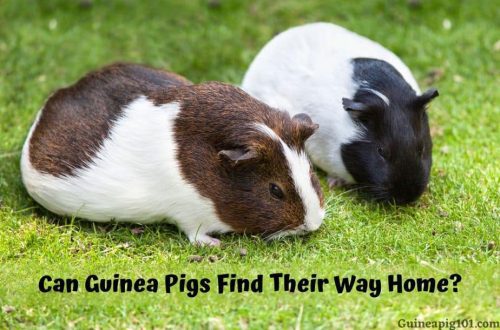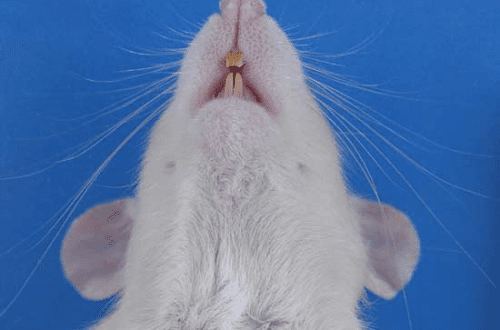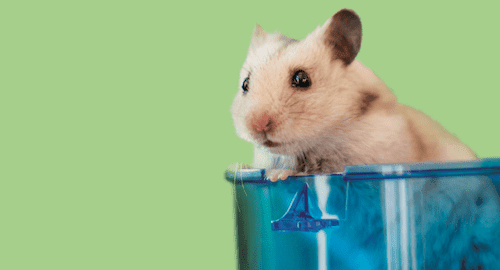
Who is better: a hamster or a guinea pig, whom to get for a child?
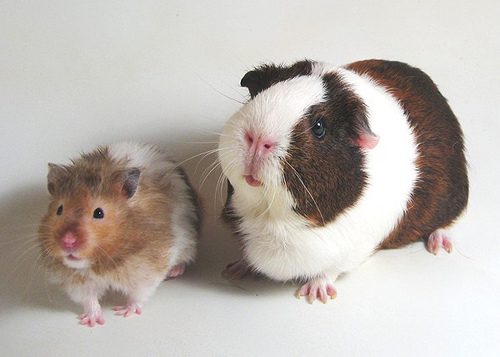
Guinea pig and hamster are active, interesting and inquisitive furry animals that can bring joy and fun to young children. The first representatives of the land are well suited for kids from 3 years old, the second will become good friends for older ages. Who is better: a hamster or a guinea pig for a child? The material below will help you decide which rodent to get and make the right choice.
Contents
What you need to know about guinea pigs
Pigs are easily tamed and do not require much care. With good care from the owner, the animal can live an average of 5 years.
The period of activity in guinea pigs occurs during the daytime, falling in the evening. Unlike hamsters, at night they will sleep peacefully without disturbing the owner with their vital activity.
Character and training
Guinea pigs are distinguished by friendliness, sociability, calm character. They can easily live next to cats and dogs, spending time in the same company without quarrels and discontent. They like to luxuriate in the hands of the owner, to whom they feel great affection, substituting a fur coat for scratching. Noticing the presence of the owner, these animals begin to whistle loudly, expressing their good feelings and joy.
Pigs are completely devoid of aggression: they will never attack or even defend themselves, preferring to retreat quietly. If desired, the animals can be trained to perform a variety of tricks, as they train easily and successfully, which attracts the attention of children. A trained pig can follow the owner everywhere, stand on its hind legs or roll a small ball with its muzzle. When answering the question of which of the rodents is smarter, the advantage remains precisely with the mumps.
Care
Daily care of the animal is within the power of a 6-year-old child, but if you have an animal for a preschooler, an adult needs to take care of the creature. You will also have to watch the baby so that, out of ignorance, he does not harm the pet, otherwise the affected pig is able to lose confidence in the owner.
Cell
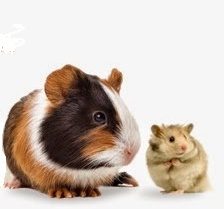
The guinea pig needs a spacious cage in which he can lead an active lifestyle, moving freely within the apartment. The condition is mandatory, since inactivity will lead to obesity and will not allow the paws of the animal to become strong.
The cage is located in a quiet place, protected from drafts and coolness, so that the pig does not catch a cold. Nearby there should be no wires, since the nature of the rodent will certainly manifest itself in the ability to gnaw through solid objects. It is important to provide the cage with a special house where the pig can sleep or hide.
Essential plaid accessories
As bedding, it is better to use ordinary sawdust, because pigs are big fans of burrowing, and the material should be harmless. Periodically, you need to clean the cage, because the sawdust will smell unpleasant. It is necessary that the cage has a drinking bowl with clean water and a feeder filled with food, fresh grass or hay. So that the pig can grind teeth and claws, offer her a mineral stone or a hard piece of tree bark.
A running wheel should become a mandatory attribute of the cage, giving way to a mirror and ladders. Every day, the guinea pig must be released to walk around the house, not forgetting to keep an eye on the animal, as it can get into a hard-to-reach place and get stuck.
Food
Guinea pigs are not whimsical in food. With pleasure they feast on various grain crops, herbs, vegetables and fruits. From grass, they prefer lettuce, parsley and dill, fresh dandelion leaves and spinach. From fruit and vegetable fruits, they can be fed with fresh cucumbers, sweet peppers and carrots, apples, peaches and strawberries. Unlike hamsters, guinea pigs should not be fed meat, potatoes, or cheese.
A distinctive feature of the pig is eating its own feces, which contain a vitamin useful for its body. If the animal begins to eat uncleaned excrement in time, a very small child can repeat after the animal, thinking to independently evaluate the “delicacy” of the pig.
Benefits of a guinea pig
About Guinea Pig Benefits:
- they are easy to care for;
- you can do training;
- complete absence of aggression;
- very fond of being on hand;
- get along with other pets.
Another weighty argument to get pigs is the opportunity to buy a bald animal of the Skinny breed if the child is allergic to wool. When choosing a guinea pig as a pet, you need to remember to regularly clean the cage to avoid unpleasant odors in the house.
What you need to know about hamsters
Unlike pigs, hamsters are finicky creatures. Only one animal should live in one cage, otherwise the instincts of rodents, which tend to protect their territory, will lead to fights. It is undesirable to release hamsters for walks around the house, since the rodent is able to crawl into even the smallest hole, from which it will be difficult to get it out.
Character
Ordinary or Syrian breeds of hamsters are distinguished by a share of aggressiveness and pugnacity, which may appear unexpectedly for the owner. If you touch a sleeping rodent, he can get scared and, waking up urgently, it hurts to bite the owner. Following the basic rules of care and communication with the animal, unpleasant moments are easy to avoid, receiving only positive emotions from the hamster.
Life
The moment of activity in animals comes at night, all day they rest quietly and sleep soundly. Toward evening, hamsters begin to rustle, rustle and in every possible way remind of their existence. Sometimes they interfere with the night sleep of the owners. For this reason, it is better to move the cage away from the sleeping area so that the animal cannot be heard.
Communication
Communication with a hamster will be of a specific nature: he does not like long gatherings on his hands, preferring unobtrusive attention in the form of short strokes on his fur. If the child is not inclined to constant communication with an animal, it is better to have a hamster than a guinea pig.
Cell
The animal’s cage should be placed in a quiet place, avoiding the proximity of heating devices, open sun and drafts. The cage can be medium in size with a special house. Just like a guinea pig, a hamster needs shelter and a private place to sleep. By the way, the house needs to be cleaned regularly, as the hamster tends to stock up on food.
Necessary cage accessories
It is necessary to install a running wheel on the territory of the cage so that the animal has the opportunity to lead an active life. The water in the drinker should be changed regularly, the feeders should be filled with grain feed, periodically feeding the pet with fruit and vegetable desserts, sometimes with meat. Special filler or sawdust is suitable as bedding, but wood will not protect the house from smell.
Hamsters tend to identify a bathroom in a cage, so after cleaning, he needs to provide a few paper napkins so that he can build a toilet nook. If you decide to get a hamster, you will need to clean the sanitary area every 3 days, carry out general cleaning once a week.
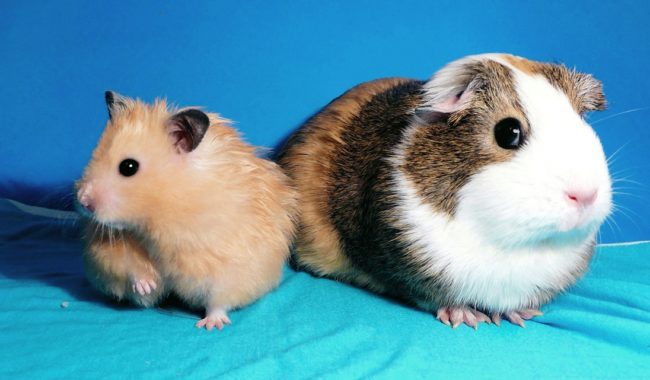
Food
Since the rodent sleeps during the day, you need to feed it in the evening. Food can be applied 1 time during the day, strictly observing that there are always grains in the feeder. Every day, the animal should be treated with lettuce leaves, carrots or slices of bananas. The diet of hamsters requires attention, as there are foods that will not bring health benefits to the rodent. When in doubt, it is better to make sure that the treat is acceptable in order to avoid unpleasant consequences.
It is important that the cage contains fresh branches of fruit trees such as apple, pear or mountain ash, so that the hamster can grind teeth and claws. Before offering the rodent cut branches, they must be thoroughly washed and dried. When caring for a hamster, you should regularly inspect his possessions for supplies. Hidden food often spoils, exposing the animal to food poisoning.
Hamster Benefits
About the benefits of hamsters:
- do not require much attention;
- do not take up much space;
- ease of maintenance;
- low cost.
A hamster will be a good company for a calm student who will not impose his communication on the animal, being content with observing the life of a funny rodent. Despite the isolation of the hamster, you can always try to make it tame by teaching it to sit on the master’s shoulder.
Decide on the choice
Land animals are almost the same in the basic rules of care and nutrition. The difference is found only in character and abilities. The guinea pig is a fairly intelligent rodent that is easy to train. With a hamster in this regard, it will be more difficult. Another important point, how a hamster differs from a guinea pig, is that the pig lives longer. With good care, she can live up to 6 years, while hamsters begin to age at the age of 1 year, and at the turn of 2-3 years the animal dies.
All children tend to want to get a pet with whom they can play or watch the tricks of the animal, having fun in his company. If the baby likes to squeeze the animals, the guinea pig will be very happy with the affectionate owner. Hamsters, on the other hand, prefer peace and freedom, so school-age children will be an ideal owner for them.
Best pet for a child: hamster or guinea pig?
3.1 (62.67%) 165 votes



